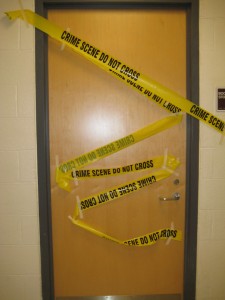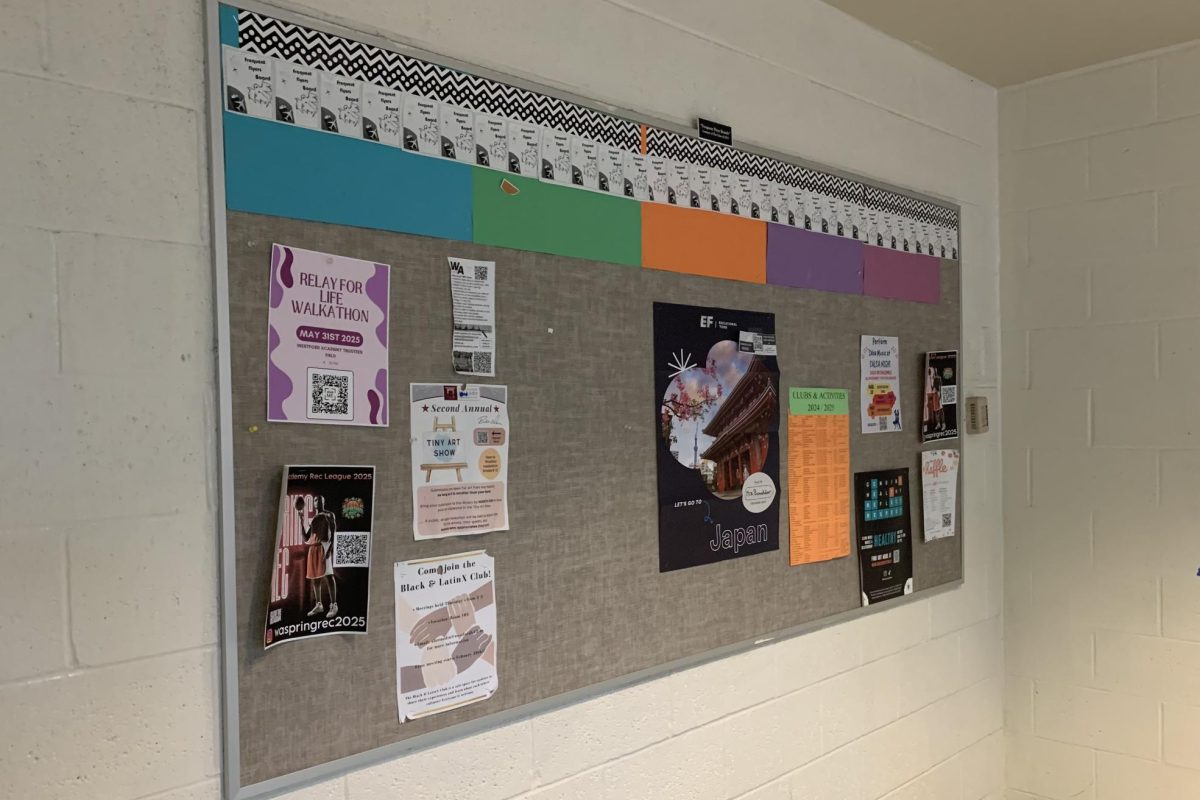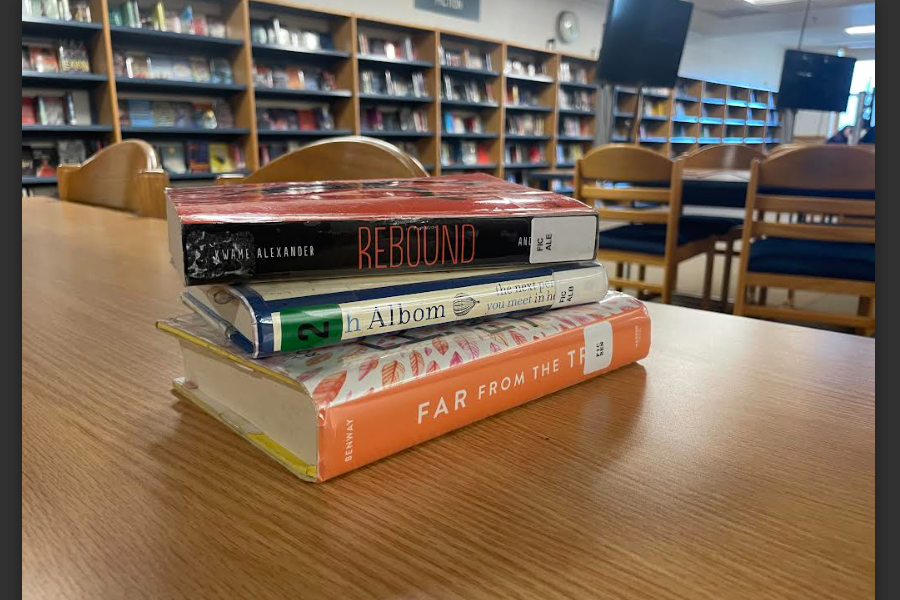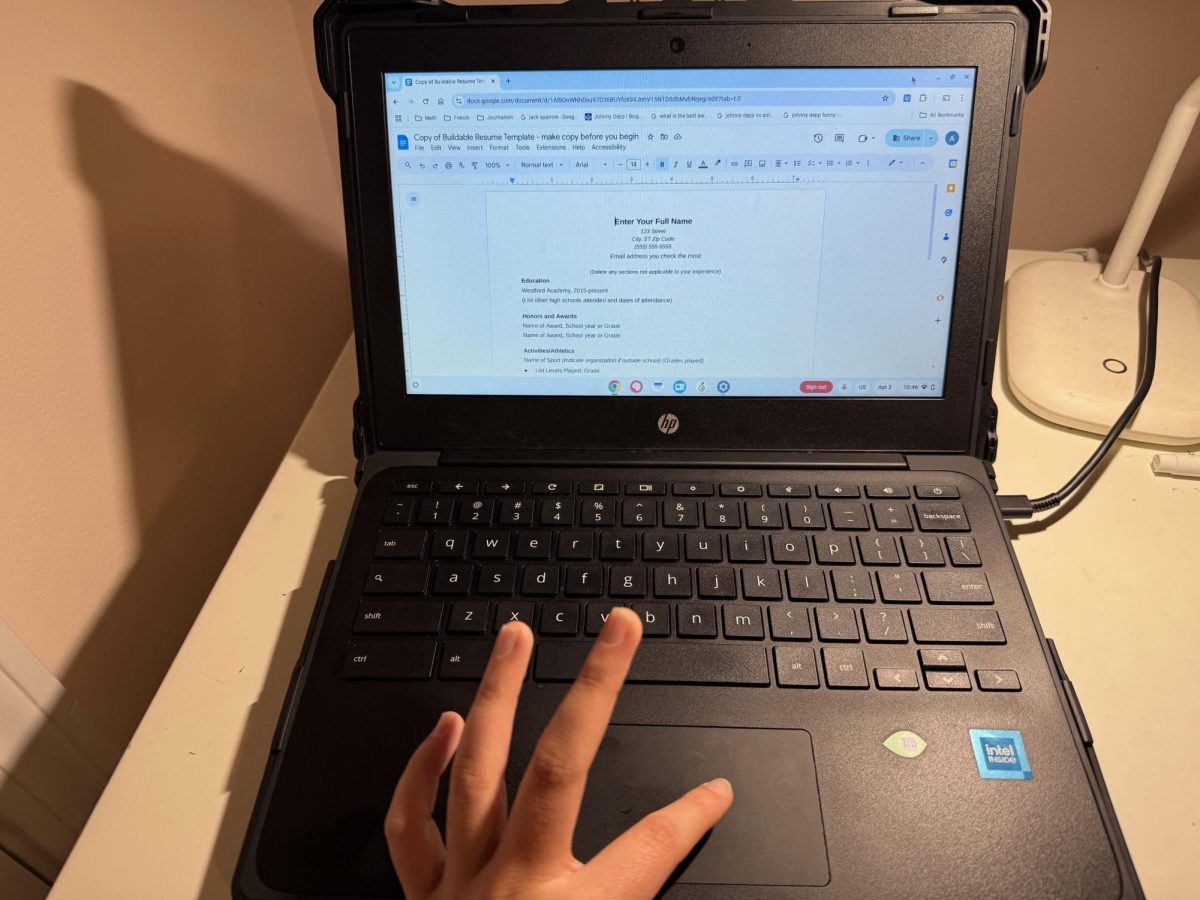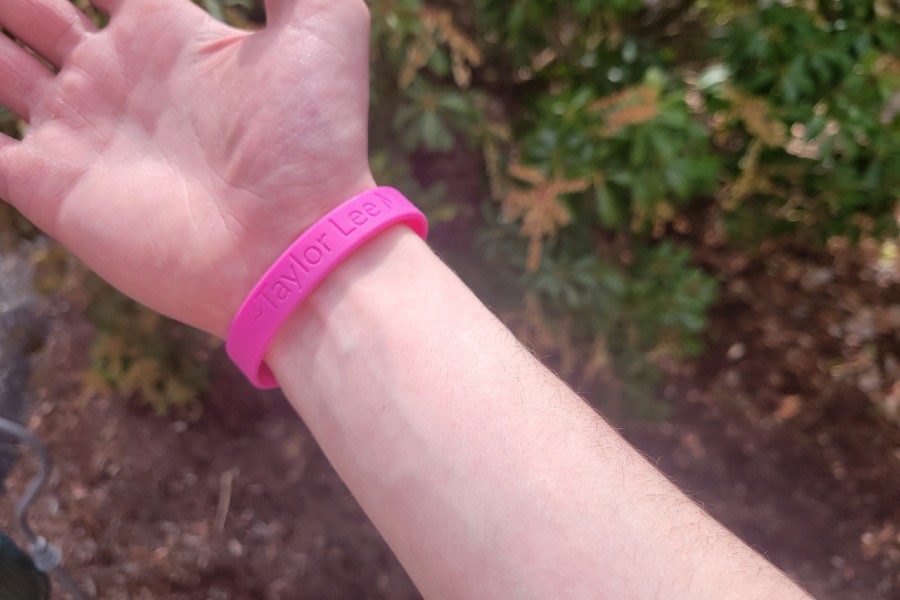Westford Academy students all must take an average of seven midterms each school year, most of them consisting of tests that could take up to an hour and a half each.
But the Forensics students get to take a break from the scantrons and number two pencils. Instead, these students have to take what they learned in class and solve a crime.
For the midterm for this lab-based class, students are assigned into teams, each person having a designated job. The different roles are DNA analysis, handwriting analysis, hair analysis, fingerprint analysis, and drug and lipstick analysis.
Students visit four crime scenes; on the other side of the “Caution” tape, students find hair samples, “blood” splattered, and messages written in either lipstick or ink.
Then students take back the fingerprints, blood, hair, and ink samples back to the classroom, where they discuss what they found with their teammates, analyze their notes, and look at the samples through microscopes.
There are a total of five suspects for the crime, but only two actually committed it. The faculty of WA gets involved, in which staff members can donate hair and fingerprint samples to the crime investigation.
In the classroom, students working on the project can be seen walking around and taking notes, discussing with their teammates, and working with different chemicals. Forensics teacher Teresa Burke comments that the students are “super interactive” with this project.
Doing this crime investigation instead of having students taking a standardized test is “so much more fun” said Burke.
Burke says that the kids learn more, and this way the students are able to apply what they have learned in the classroom.
Sarah Meuer, a Forensic student also says that solving this crime is “definitely fun”. Being the handwriting analysis, she has to examine the ink from the pens they collected. Meuer also mentions that she prefers this to a standardized test.
Forensic student Jack Brady comments that the project is “pretty cool” and that it is very “hands on”. He said that since the students get to choose which analyzer they want to be, they like their roles and working on the project more. Though it is challenging, it is still fun.
It’s “like a puzzle,” said Brady.

